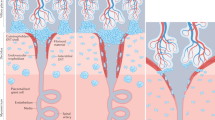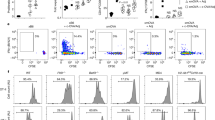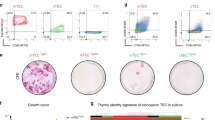Abstract
THE conceptus is not automatically rejected by its mother as an allograft even though it differs genetically and therefore antigenically1–3, perhaps in part because foetal tissues are segregated from immunologically competent maternal cells. For example, the surface of trophoblastic cells is partially covered by highly sulphated acid mucoprotein and the trophoblasts themselves have few if any transplantation antigens3–8. Also, blocking factors may prevent the mother from immunologically damaging her foetus(es). For example, pregnant mice have a serum factor which blocks their lymphocytes from inhibiting the growth of antigenically foreign mouse embryonic cells9; similar results have been observed with human materials10,11. We now report a further possible mechanism by which the newborn actively suppresses mitosis of maternal and other foreign lymphocytes.
This is a preview of subscription content, access via your institution
Access options
Subscribe to this journal
Receive 51 print issues and online access
$199.00 per year
only $3.90 per issue
Buy this article
- Purchase on SpringerLink
- Instant access to full article PDF
Prices may be subject to local taxes which are calculated during checkout
Similar content being viewed by others
References
Beer, A. E., and Billingham, R. E., in Adv. Immunol., (edit. by Dixon, F., and Kunkel, H.), 14, 1 (Academic Press, New York, 1971).
Billingham, R. E., New Engl. J. Med., 270, 667–672 (1964).
Currie, G. A., Proc. R. Soc. Med., 61, 1206 (1968).
Edidin, M., in Transplantation Antigens, Markers of Biological Individuality (edit. by Kahan, B. D., and Reisfeld, R. A.), 75 (Academic Press, New York, 1972).
Bradbury, S., Billington, W. D., Kirby, D. R. S., and Williams, E. A., Am. J. Obst. Gyn., 104, 416–418 (1969).
Currie, G. A., van Doornick, W., and Bagshawe, K. D., Nature, 219, 191–192 (1968).
Currie, G. A., and Bagshawe, K. D., Lancet, i, 708–710 (1967).
Tai, C., and Halasz, N. A., Science, 158, 125–126 (1967).
Hellström, K. E., Hellström, I., and Braun, J., Nature, 224, 914–915 (1969).
Leventhal, B. G., Buell, D. N., Yankee, R., Rogentine, G. N., and Terasaki, P., in Proc. Fifth Leukocyte Culture Conference, 473 (Academic Press, New York, 1970).
Kasakura, S., J. Immun., 107, 1296–1301 (1971).
Mendelsohn, J., Skinner, A., and Kornfeld, S., J. Clin. Invest., 50, 818–826 (1971).
Moorhead, P. S., Nowell, P. C., Mellman, W. J., Battips, D. M., and Hungerford, D. A., Expl Cell Res., 20, 613–616 (1960).
Khudr, G., and Benirschke, K., Am. J. Obst. Gyn., 110, 1091–1095 (1971).
Ceppellini, R., Bonnard, G., Coppo, F., Miggiano, V., Pospisilm, C., and Pellegrino, M., Transplant .Proc., 3, 58–63 (1971).
Bonnard, G., and Lemos, L., Transplant. Proc., 4, 177–180 (1972).
Dixon, F. J., and Weigle, W. O., J. exp. Med., 105, 75–83 (1957).
Dixon, F. J., and Weigle, W. O., J. exp. Med., 110, 139–146 (1959).
Author information
Authors and Affiliations
Rights and permissions
About this article
Cite this article
OLDING, L., OLDSTONE, M. Lymphocytes from human newborns abrogate mitosis of their mother's lymphocytes. Nature 249, 161–162 (1974). https://doi.org/10.1038/249161a0
Received:
Revised:
Issue date:
DOI: https://doi.org/10.1038/249161a0
This article is cited by
-
Impaired T-lymphocyte colony formation by cord blood mononuclear cells
Journal of Clinical Immunology (1982)
-
Active thymus derived suppressor lymphocytes in human cord blood
Nature (1977)
-
Feto-maternal relationship in normal pregnancy in mixed lymphocyte cultures
Archiv für Gynäkologie (1976)
-
Mitosis of maternal lymphocytes in the presence of fetal cells: Possible implication in prenatal diagnosis from fetal blood samples
Human Genetics (1976)



